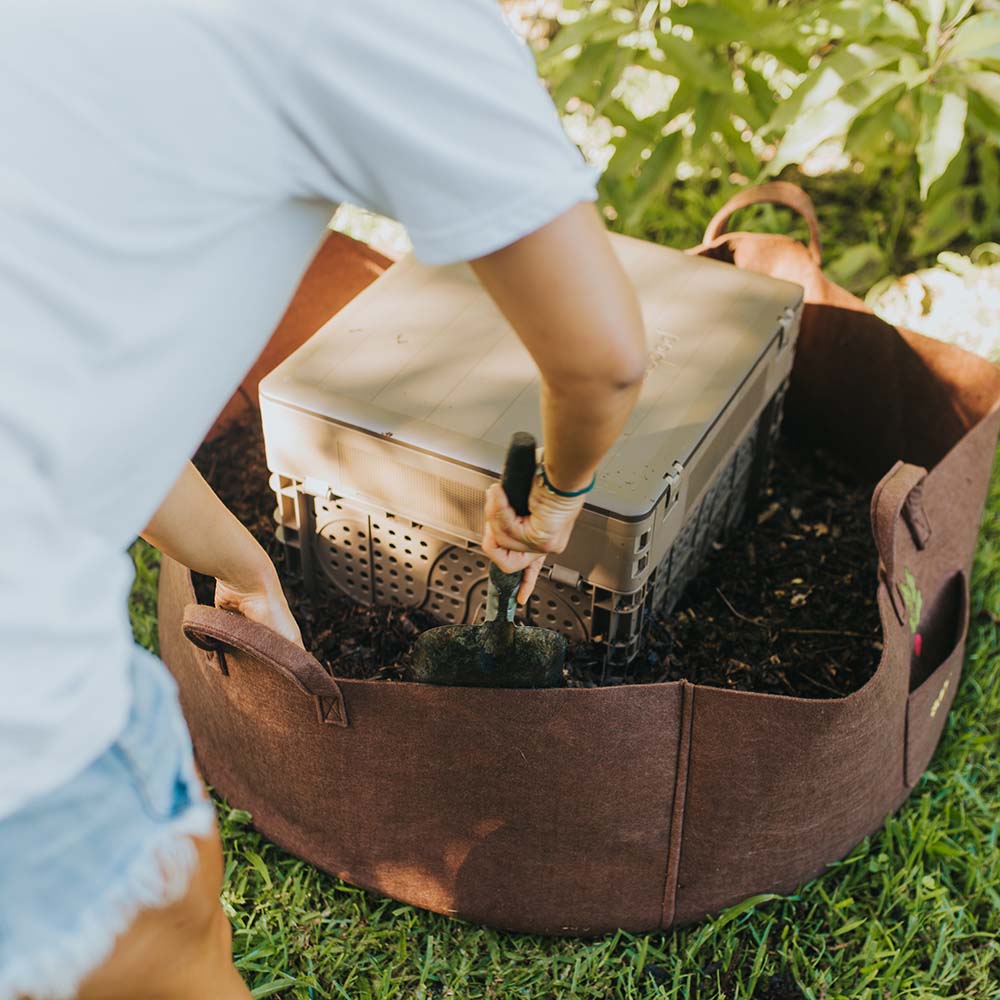Hi, I’m Katie from kitchengardenbykatie.com! I have an allotment in the southeast of England, where I grow most of my own vegetables. I have a huge passion for growing food (and increasingly flowers too!), and I firmly believe that anyone who has access to a growing space should be making the most of it! This is why I wanted to write a post on Autumn gardening – to help you ensure your space is productive year round, and not just for summer!
Autumn gardening
As the days are rapidly drawing in and the temperatures are decreasing, we begin to see everything start to slow down in our gardens. However, in September and into autumn there is still plenty to be doing in the garden. Being in the southeast of the UK, we have a climate equivalent to the American climate zone 8b, with minimum winter temperatures rarely exceeding 14°F – 18°F.
Because of our temperate climate, we are fortunate to be able to grow many crops overwinter, either for winter harvests or earlier spring crops. September is a great time for planting many of these, and you can interplant between the summer crops that are still in the ground. If you experience temperatures that are much below what we have, then it is worth doing your own research to see which vegetables will survive temperatures in your area.
Autumn harvest and preserving
September is usually the busiest month for crops. Because of this, I often find myself spending much of my time harvesting and preserving my produce to enjoy through the winter. There is nothing better than homegrown and homemade jam, or passata made from your own homegrown tomatoes. I love being able to preserve some of my summer abundance to enjoy during the darkest days of the year.
Roasting tomatoes for homemade passata
Last year's sauerkraut (still good to eat!)
Another method of preserving that I love, which requires no heat or freezing, is fermenting. I’ve still got a jar of sauerkraut in my cupboard from last autumn’s harvest that is perfectly fine to eat. Please do not be scared to try your hand at fermenting, it is such a great way of preserving food. Sauerkraut is a great starting point for beginners, and you can always throw some carrots or beetroot in there too.
Planning for Spring
This time of year is a great time to start planning for next year’s growing season. If you’re new to gardening, you may be surprised that now is the time to order your spring bulbs. I also like to start thinking about what I want to grow next year, so I can get my seed orders in early to avoid disappointment.
Planting over winter
Many people see winter as a time to wind down in the garden. It is not uncommon to see allotment plots laying completely bare or covered in plastic for 6 months of the year. I feel that this is such a shame, especially if you are in a region with a more temperate climate. There is so much you can grow over the winter, enabling you to enjoy winter and early spring harvests.
Alliums
If you haven’t already sown your winter onion seeds, then fret not. Winter onion sets are great for planting in September and October. Winter onions are fantastic for giving you a crop of onions around mid to late spring, and are great for tiding you over until your maincrop onions are ready. The only caveat with winter onions is that they do not store well, so it’s only worth planting a couple of months’ worth of onions plus a few spare.
Autumn sown garlic
Garlic stands well in the snow
Garlic is another great crop to grow over winter. The best time to plant garlic is from late September to late October. By planting garlic in the autumn, you should have a nice and early crop following year – usually sometime in June. This should also enable you to get a second planting of a different crop during the summer.
Brassicas and leafy greens
If you haven’t already sown winter lettuces, rocket, chard and spring cabbage, then you should be able to buy some plugs online. Salad crops are great cut-and-come-again crops to grow and enjoy fresh throughout the winter.
Early April harvest basket from overwintered plants (unprotected)
Lettuce variety 'valdor' survived -46°F
Spring cabbage should also be planted in the autumn. Whilst these will appear to grow very little this side of winter, they will establish themselves nicely ready to grow quickly once the days start warming up again in the late winter and early spring. You can also plant spring cabbages more closely together to enjoy as spring greens rather than a head of cabbage.
Broad beans
Broad beans are another crop that are great for planting overwinter. I usually plant mine sometime in November for an early June harvest. If you are looking to plant them in the autumn, look for autumn planting varieties such as Aquadulce Claudia.
November sown broad beans in February
Also be aware of mice who like to eat the ungerminated seeds, and birds who may peck at the seedlings when there is little else around. Many people start them off in pots undercover for this reason. We plant direct, but have found that watering the seeds with diluted urine (yes, you read that right!) once a month until the plants are a few inches tall keeps the mice at bay. It sounds gross but you wouldn’t think twice about planting in animal manure! For protection from birds, use netting.
Clearing ground
For areas of your garden where you do not have any crops planned to grow over the winter, then autumn is a great time to give yourself a head start ready for next year’s growing season. When you’re clearing your beds of your summer crops, it is best to either twist the plants out of the ground to leave most of the roots in, or to simply just cut the plant at ground level. By leaving the roots in the ground, it provides food for the beneficial microbes in the ground over the winter months. Using this technique is a great method to help maintain healthy soil. The only exception I’d make to this is if you have suffered with clubroot on your brassicas, then it is probably best to pull it all up!
Feeding your soil
Autumn is also a great time to spread a layer of compost or manure over any empty beds. By doing this in the autumn, it gives time for the microbes in the soil to draw the nutrients into the ground, without you having to dig it in. This will also help improve soil texture, ready for your spring plantings.
Another option you could try is sowing green manure. For many types of green manure, they need to be sown no later than September, so act fast (although you may have more time in warmer climates!). If you are using the no-dig method (which I highly recommend, by the way) then look for green manures that do not require digging in. Mustard, phacelia and field beans are all great options. However, avoid mustard if you have clubroot present in your soil because it is part of the brassica family and will interfere with crop rotation. Field beans can be sown at the same time as broad beans, and then cut back to ground level during the spring and composted.
A final note
If you live in a region with a temperate climate there is still so much you can do in your garden over the next few months. Yes things may slow down in the garden, but they certainly don’t stop! I hope you can draw some inspiration from this to make the most of your growing space throughout the entire year, and not just the summer months. It really is the best feeling being able to enjoy fresh, homegrown produce throughout the entire year.
Ready for a fall garden project?
Grab a Subpod today and get your worms settled in before winter!







Leave a comment
This site is protected by reCAPTCHA and the Google Privacy Policy and Terms of Service apply.